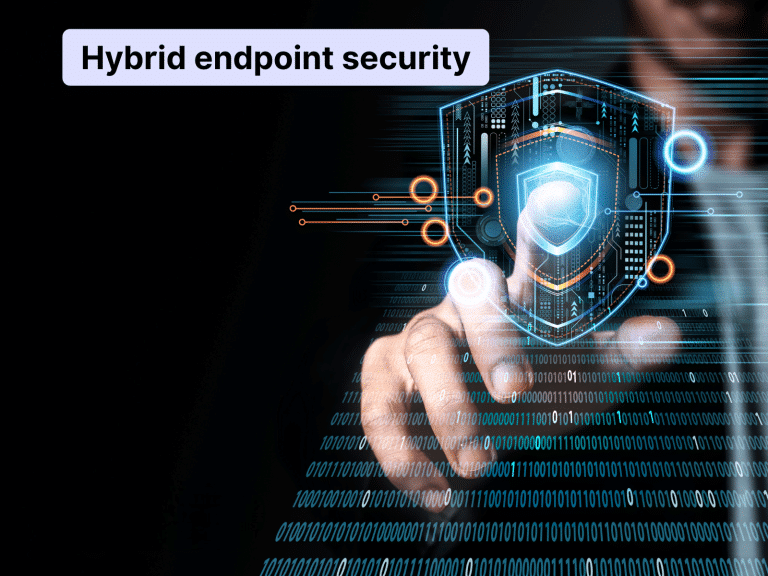The shift to hybrid work environments has redefined the modern workplace, creating both new opportunities and unprecedented security challenges. As employees alternate between home offices and corporate locations, the traditional security perimeter is no longer sufficient. Endpoint security—once considered a secondary layer of protection—has now become a frontline defense against cyber threats. With more devices connecting from a variety of locations, securing each endpoint is critical to safeguarding corporate data and ensuring business continuity.
The Role of Endpoints in Hybrid Work –
In a hybrid work model, endpoints include laptops, desktops, smartphones, and tablets used by employees to access corporate networks and data. These devices may operate outside the direct control of the organization’s IT team, often using personal or public Wi-Fi networks that lack enterprise-level security measures. Each endpoint becomes a potential entry point for cybercriminals, whether through phishing attacks, ransomware, malware, or unpatched software vulnerabilities. As employees access sensitive applications and share files across various platforms, the endpoint itself becomes the new security perimeter.
Modern Endpoint Security: Beyond Antivirus –
Traditional antivirus software is no longer enough to combat today’s sophisticated threats. Endpoint security in hybrid work environments now requires advanced solutions like Endpoint Detection and Response (EDR), which offers real-time monitoring, behavioral analysis, and automated threat mitigation. These tools are designed to detect unusual activity on a device, investigate potential breaches, and respond quickly to minimize damage. Additionally, tools such as Mobile Device Management (MDM) and Unified Endpoint Management (UEM) allow IT administrators to enforce security policies remotely, deploy patches, and ensure compliance even on employee-owned devices.
Challenges Unique to Hybrid Environments –
Managing endpoint security in a hybrid setup comes with a set of unique challenges. Organizations must deal with device diversity, ranging from corporate-issued laptops to personal smartphones, all running on different operating systems and configurations. Ensuring consistent security across such a fragmented environment can be complex. Another issue is visibility—security teams may not have real-time insight into off-network devices, making it harder to detect and respond to incidents quickly. Moreover, balancing robust security with employee convenience is critical. Overly restrictive policies can disrupt workflows and reduce productivity, leading users to seek insecure workarounds.
Best Practices for Securing Hybrid Endpoints –
To secure endpoints effectively, businesses must adopt a layered, proactive security approach. Implementing multi-factor authentication (MFA) on all devices adds an extra layer of protection against unauthorized access. Encryption of data both at rest and in transit ensures that sensitive information remains protected, even if a device is lost or stolen. Regular software updates and automated patching help close known vulnerabilities that attackers often exploit. Employee training is also vital; educating staff on how to recognize phishing attempts and practice secure file sharing can significantly reduce the risk of breaches caused by human error. Additionally, adopting a zero-trust framework—where no device or user is trusted by default—can help contain threats and limit lateral movement within the network.
Conclusion –
Endpoint security is no longer a backend concern—it is a central pillar of IT strategy in hybrid work environments. As the number and variety of endpoints grow, so does the complexity of securing them. Organizations that invest in comprehensive endpoint protection, leverage automation and real-time monitoring, and promote security awareness among employees will be better positioned to navigate the risks of the hybrid workplace. In today’s connected world, safeguarding the endpoint means protecting the entire enterprise.

